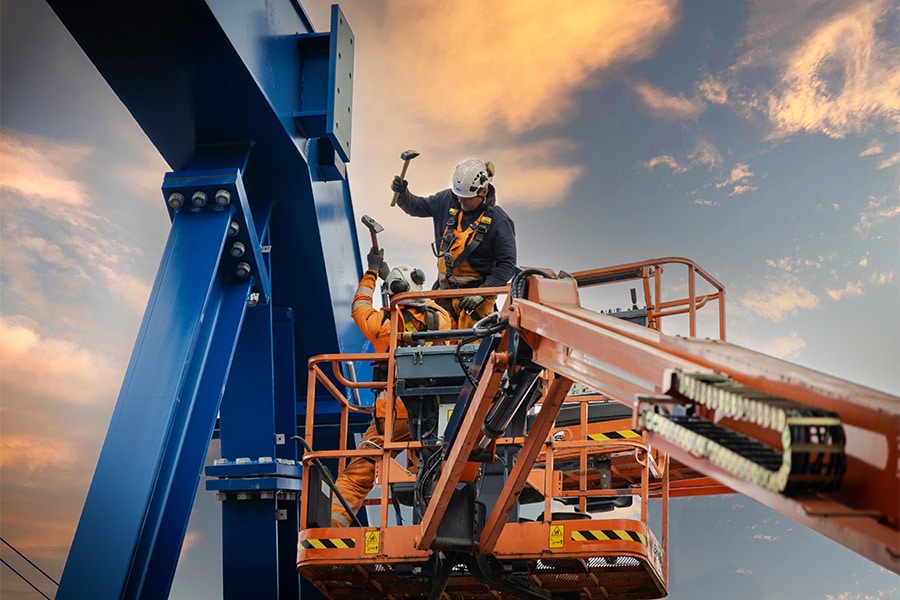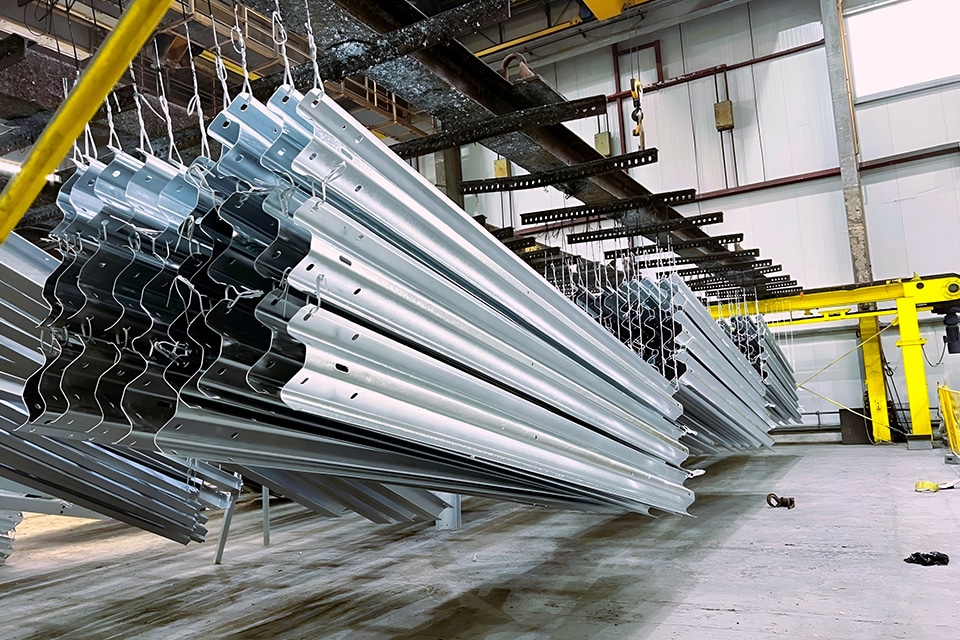
Reusing guide rails pays off
Rijkswaterstaat wants to work climate-neutral, circular, clean and emission-free. Reusing guide rails contributes to that ambition. The market is also ready and has shown that the reuse of guard rails pays off. What's more, the market is encouraging road authorities to include the renovation of guard rails in their maintenance contracts and not to wait until a major reconstruction, because then it may just be too late and the guard rail can no longer be renovated.
Before 2004, the reuse of guide rails was standing practice at the Department of Public Works. "After that, the adage 'market, unless' applied and road availability became even more important than before. As a result, guide rails were cut, which is up to 3x faster than neatly dismantled. Then, as road availability became even more important, the guide rails were cut and disposed of as scrap. In 2011, European regulations on the marketing of guide rail also came into play; it had to be CE-marked," says Marjan Poortinga, senior consultant on circular economy at Rijkswaterstaat. "With that, the possibility of legitimate renovation stopped, because there was no CE on reused guide rail. So since then, guide rails have been cut up and disposed of as scrap. A shame." With the circular economy in mind, Rijkswaterstaat and market parties have together put renewed energy into the reuse of guide rails starting in 2019.
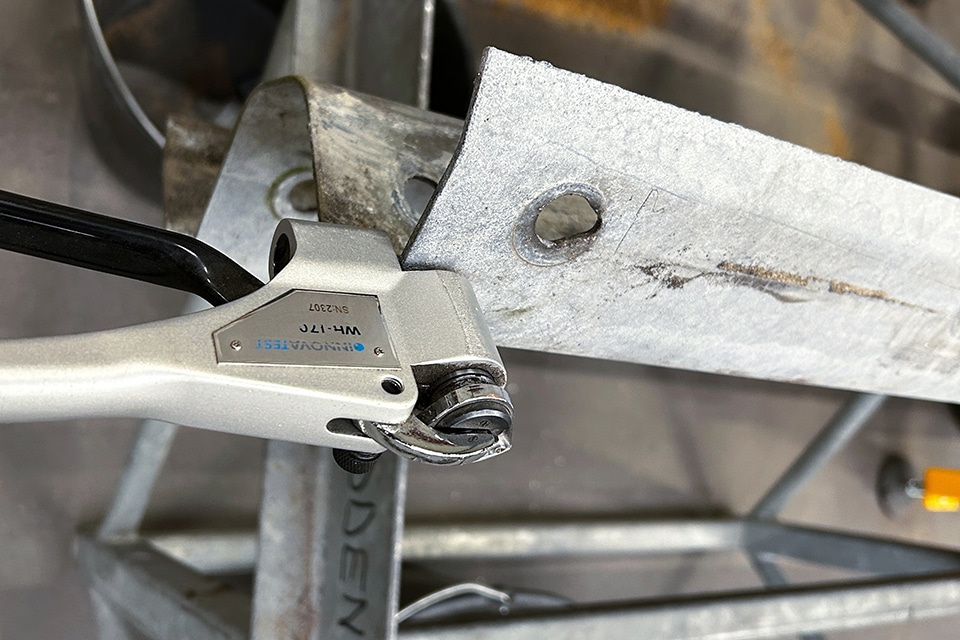
Fictitious discount when environmental tax is low
"We started with a market survey inviting the entire market, from guide rail suppliers and contractors to galvanizers and clients," Poortinga continued. "The aim was to investigate how we could implement the reuse of guide rails in the most efficient and effective way possible, taking into account the aspects of time, cost and environmental gain. The results from the exploration were then tested on a pilot project along the A79 motorway between Maastricht and Heerlen." In terms of time, it can take up to three times as long to neatly dismantle the guide rails compared to cutting, the costs are almost the same between new and renovated and the environmental impact is about one-third lower compared to new.
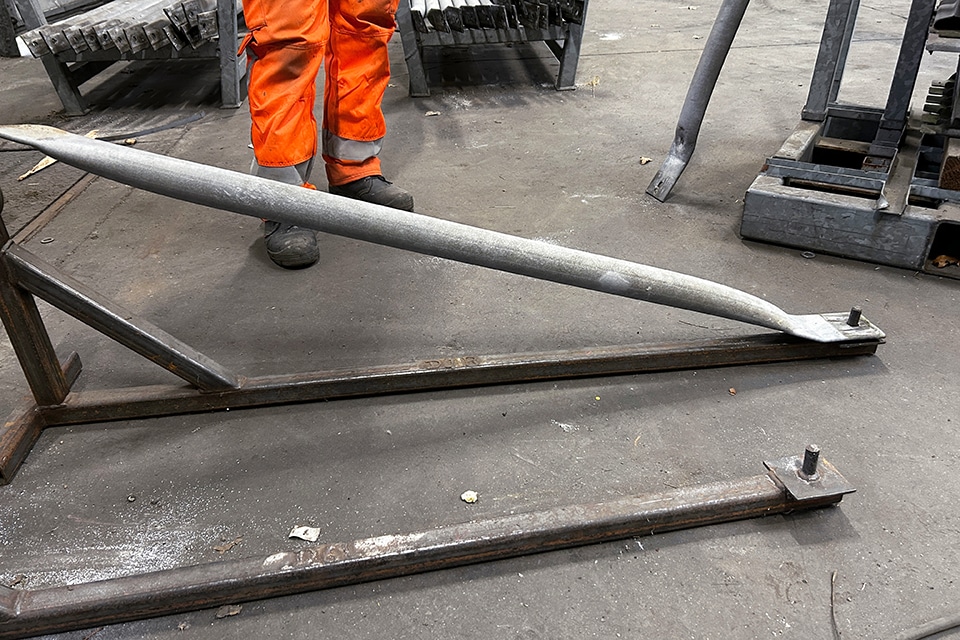
Alfo van Schijndel, business manager of Heijmans Wegspecialisme, can agree and adds: "The pilot project demonstrated that the reuse of guide rails is feasible, provided a number of conditions are met. This has led Rijkswaterstaat to include in new contracts since 2023 that reusable guide rails must be neatly dismantled so that they can be reused. Moreover, during the tendering phase, Rijkswaterstaat rewards the contractors with the lowest environmental impact with a notional discount through the so-called environmental cost indicator. This makes it attractive for contractors to work with reusable guide rails. An example that other clients should follow."
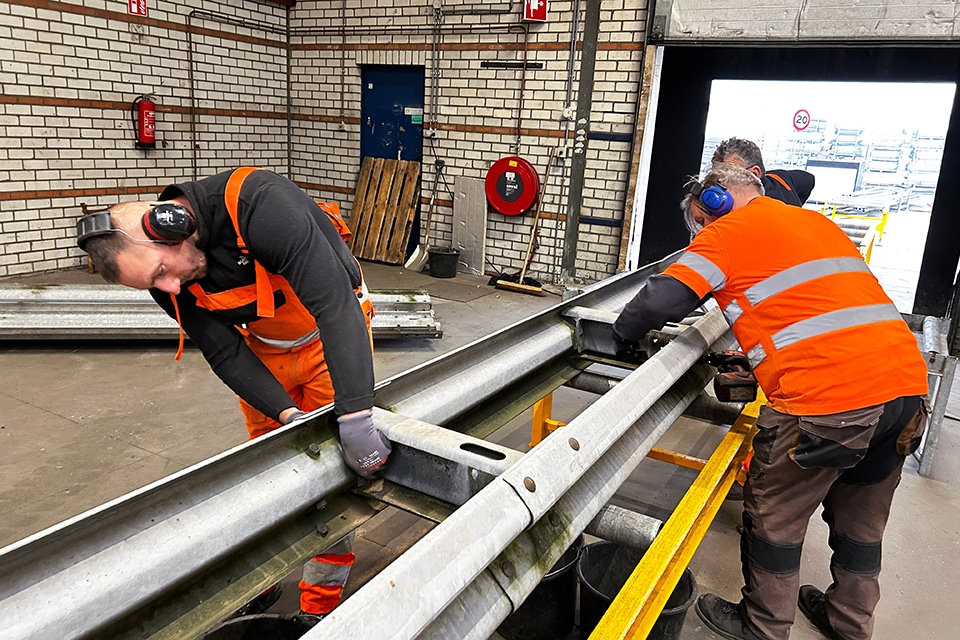
CE mark
Renovating guide rails has thus been common practice again since 2023, but there will be another challenge from January 1, 2025. "From then on, only renovated guide rails may be used under CE marking," says Herman Odijk, Managing Director at Saferoad Holland. Until that time, the Department of Public Works allowed another road without CE marking, to encourage the transition to reuse and because there was only one provider who could supply renovated with CE marking. Odijk: "In the Netherlands there are two manufacturers who supply new guide rail under CE. After all, you have to be a manufacturer to put a CE-certified product on the market, and that includes renovated guide rails."
In this 'challenge' Rijkswaterstaat again explicitly involved the market. Poortinga: "It is one of the success factors in the transition: involving the entire chain, even if that does not always go over roses. And that also applies to CE marking. Nonetheless, a number of parties are now committed to this, including Saferoad together with Van Doorn and Heijmans with Steel Constructions. Addy van Doorn, Manager of Conductor Rail at Van Doorn, indicates that Van Doorn and Heijmans ensure proper disassembly and then take care of the renovation of the conductor rail under the Factory Production Control manual associated with the CE certification of Saferoad and Steel Constructions.
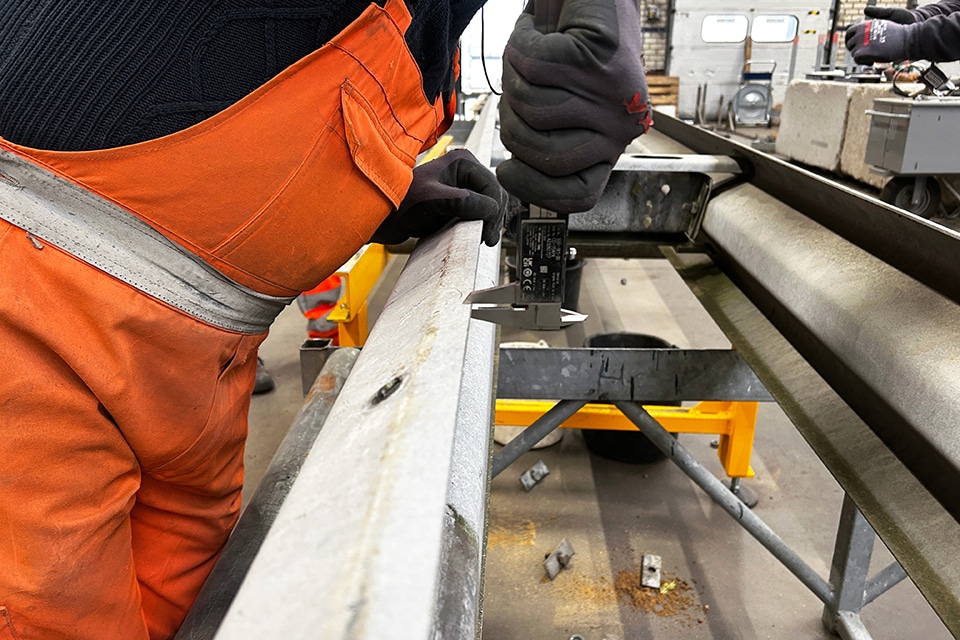
Highest safety class
There are different levels of CE marking, Odijk knows. "Guide rail falls into the highest class in terms of supervision and demonstrability to be allowed to market the product. It additionally requires a number of full-scale impact tests at an accredited test house. And those results must then be verified by a so-called second notified body, where you have to demonstrate that you can produce the guide rail as agreed. Only then is the CE granted and you can enter the market. By comparison, the CE certificate for guide rails falls in the same safety class as fire detectors for buildings." Van Schijndel adds: "A refurbished guide rail therefore performs as well as new: the steel quality is guaranteed and the zinc layer is even slightly thicker than in new guide rails, contributing to a minimum lifespan of 20 years in average Dutch weather conditions. Each component has been extensively assessed for fit, damage, shape and minimum thickness of the zinc layer. If the zinc layer is no longer adequate, the component is de-galvanized and re-galvanized."
Include in maintenance contracts
It is very diverse what comes off the road in the Netherlands, when talking about the origin of guide rails. "We even come across materials that were renovated twice before 2011 and they are still suitable," assures Van Schijndel. "Years ago, galvanizer Van Aert already demonstrated together with TU Delft that you can renovate, de-galvanize and galvanize guide rails just fine ten times without losing steel quality." That does not mean, by the way, that there is already plenty of supply of reused guide rail. "The approach is to dismantle, renovate and reinstall guide rails on a project in stages. There will be no 'trade' in reused guide rail," said Van Schijndel, who does have some concerns about progress. "Major road construction projects have been under heavy pressure in recent years and are being put on hold, while the guide rail is actually in need of replacement or maintenance. We are waiting for the initiative of the Department of Public Works and other road authorities to include guide rail renovation in regular maintenance contracts separately from these major reconstruction projects."

Rust classes
In guide rails we distinguish different rust classes, says Poortinga. "From rust class 4 you can no longer renovate. On the other hand, you shouldn't want to renovate too soon either, because that's a waste of life and not circular. The most ideal thing would be to take guide rails off the road at rust class 3. That is now becoming part of our maintenance tactics, although on our acreage we always rely on major road maintenance moments. Just replacing/renovating the guide rail won't happen so quickly because of the disruption required." Odijk: "For provincial and municipal road managers this may be different and it may actually be of added value. In any case, we encourage road authorities to take a critical look at the condition of guard rails, so that they can be timely renovated and thus given a new lease on life. Because reusing guide rails pays off."
Renovate more efficiently
Renovated guide rails shine on several sections of the Department of Public Works, such as on the A58 central reservation project where 2/3 of the 17 kilometers of guide rail were renovated and put back in place. On the Oosterscheldekering even 100% has been renovated. In addition, 99% was reused in the Prins Clausplein Major Maintenance project, 24 kilometers of guardrail was reused on the Southern Groningen Ring (out of 28 kilometers) and 42 kilometers of guardrail was reinstalled on the A1 (out of a total of 54 kilometers). Van Schijndel: "It has triggered contractors and suppliers to develop new methods that encourage reuse. The future application of longer planks is an example of this. We as Heijmans are also working to simplify the renovation process so that in the future it may no longer be necessary to de-galvanize. This technique will later be made available to various galvanizing companies. After all, as companies we work together to serve the greater good and increase sustainability in the chain. You can't do that alone."
Poortinga also praises such initiatives and especially chain cooperation. "We are leading the way with the reuse of guide rails, but there are many other steel objects along the road that can be reused, such as gantries, light poles, traffic signs and noise barriers." To be continued, no doubt!


